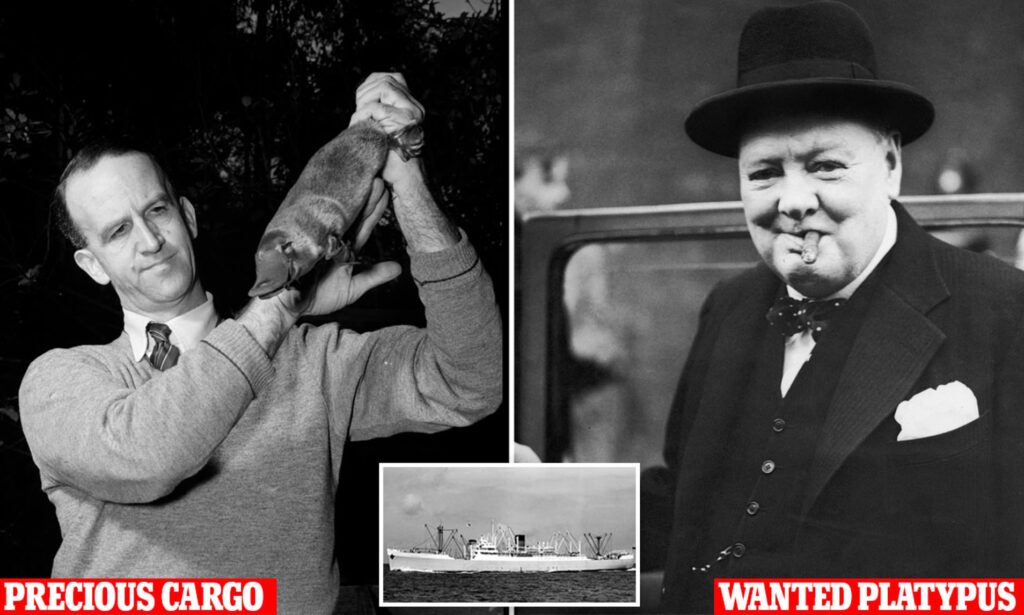The Enigma of Winston Churchill’s Platypus: Solved After Decades
2 August 2025 – In a narrative shrouded in secrecy and intrigue, the fate of a platypus gifted to Winston Churchill during World War II has finally come to light. In 1943, amidst the chaos of the war, a unique Australian animal was set to become a token of diplomacy but tragically, its arrival was met with misfortune.
A Diplomatic Offering
Named after the British Prime Minister, the young platypus was embarked on a secretive journey from Australia to England aboard a camouflaged vessel. During this tumultuous period, Australia’s government was hopeful that this extraordinary gift would enhance relations with the UK, especially as the threat of Japanese forces loomed closer.
However, disaster struck when the plucky animal, known as Winston, was discovered lifeless just before reaching its destination. While efforts were made to conceal this unfortunate event to prevent a diplomatic row, the story surrounding Winston’s untimely demise only fueled speculation and mystery.
Resurfacing the Mystery
For decades, rumors circulated that Winston’s death was linked to the stresses of wartime, particularly an alleged encounter with a German U-boat. This narrative was perpetuated by conservationist David Fleay, who later suggested that the explosive conditions had contributed to the platypus’s demise. Ultimately, however, the true cause remained a mystery—until now.
Uncovering the Truth
Recent research led by PhD student Harrison Croft has reopened the inquiry into Winston’s death. Croft meticulously examined archives in both Canberra and London, focusing on records from the ship’s crew and a detailed logbook from the platypus attendant.
“The attendant was unequivocal in stating there were no violent disturbances on the ship. The environment was calm,” Croft noted. This crucial detail contradicted the narrative that linked Winston’s demise to wartime chaos.
Simultaneously, a research team at the Australian Museum scrutinized Fleay’s records. Their findings indicated that as the ship traversed the equatorial waters, temperatures soared well beyond what is considered safe for a platypus, which could potentially lead to fatal overheating.
The Final Determination
After thorough analysis, the team concluded that prolonged exposure to high temperatures was likely the cause of Winston’s death. While the lore of shell-shock remains an entertaining narrative, it appears the platypus simply succumbed to the challenging conditions of its journey.
This revelation not only satisfies a decades-old curiosity but also underscores the complexities involved in transporting such a sensitive creature.
A Tale of Lost Diplomacy
Australia’s initial attempt at “platypus diplomacy” may not have ended favorably, but it did pave the way for future endeavors. After this ill-fated journey, the Australian government attempted to gift more platypuses in 1947, managing to successfully breed the animals in captivity.
Despite the challenges, including a dramatic media frenzy surrounding the platypuses who eventually made it to the Bronx Zoo, the grand hopes and expectations for platypus diplomacy faded with each passing year.
| Year | Event | Outcome |
|---|---|---|
| 1943 | Platypus shipped to Churchill | Died before arrival |
| 1947 | Attempted to send platypuses to Bronx Zoo | Limited success; media spectacle |


